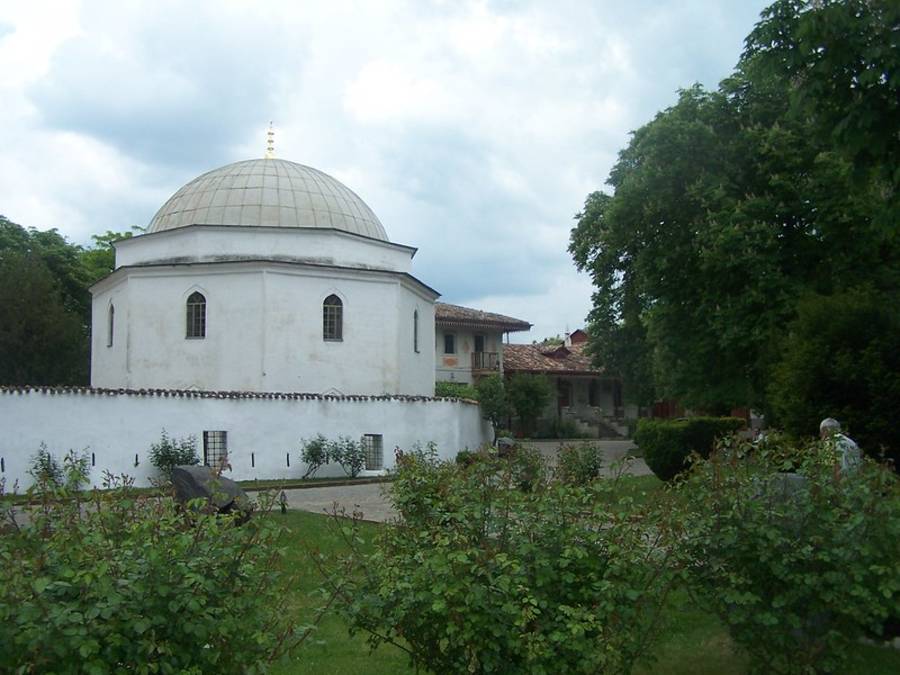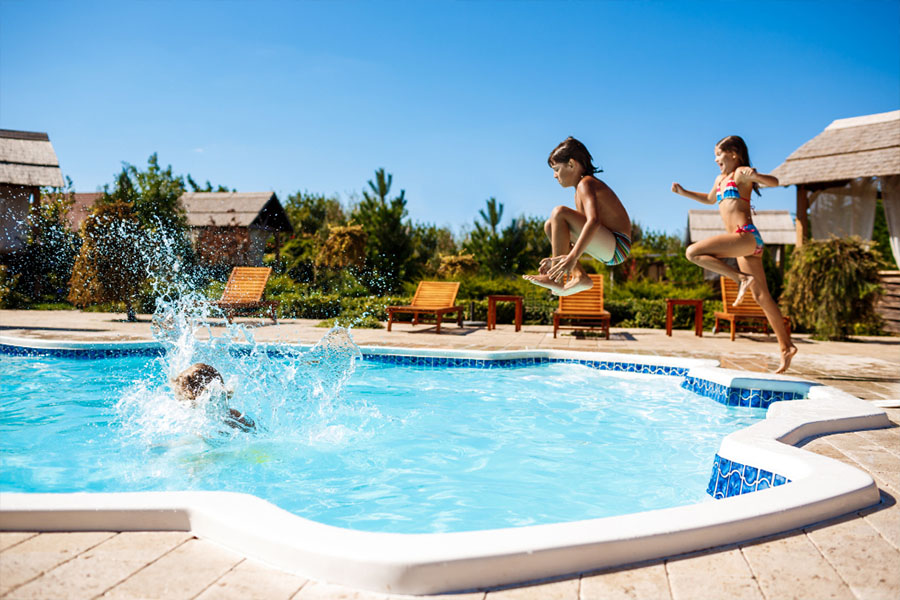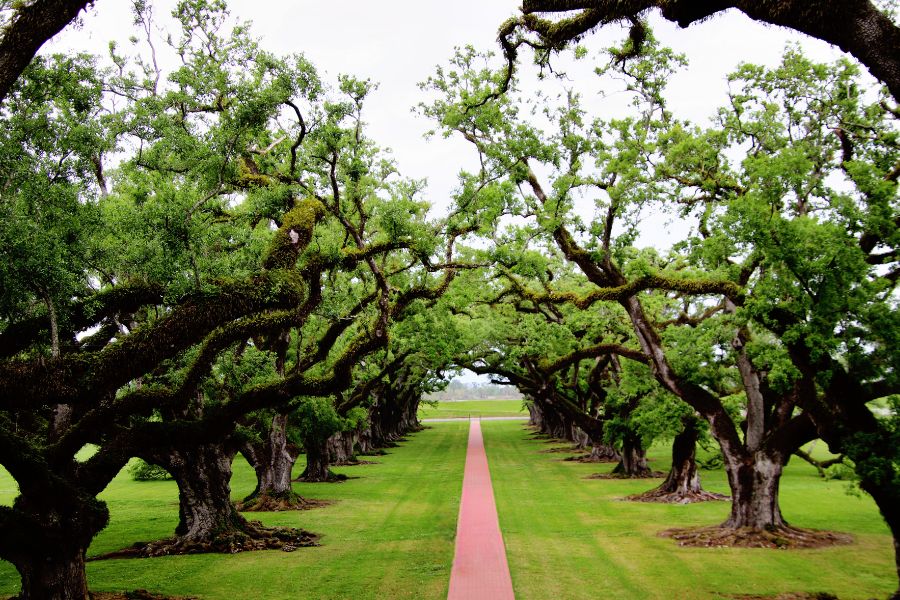Bakhchisarai
Old Bakhchisarai is located at the foot of the steep weathered rocks in the river valley Tchuruk-Su. People settled here for forty thousand years ago, but nearby at the River Alma, found a settlement that goes down in history for 80 thousand years. With the tread of centuries surf rolled and settled here peoples, creating an odd mixture of diverse cultures. Tauris and Scythians, Greeks, and Alans, Goths, and Sarmatians, Huns, Khazars, and Pechenegs written in the pages of the centuries-old history of these places.
In the XIII century to the Taurica came seven Mongol ulus, forming Crimean Yurt. After the Crimean Khanate was separated from the Golden Horde, Haji-Devlet Giray, grandson Tokhtamish Khan, moved his headquarters from Solkhat (Old Crimea) to the fortress of Kirk-Op (Chufut-Calais). Under the slopes of Cape, Burunchak palace was built Ashlam-Saray. As soon as the Crimean Khanate was confirmed in its independence, the residence of the ruler was moved from the valley close Ashlam-Dere in the river valley Tchuruk-Su. Thus was founded Bakhchisarai – “Palace-Garden,” embodies the dream of a sophisticated, paradise – a garden, with numerous sources. The name of the city, no doubt, gave Khan’s palace – Khan-Sarai, construction, and reconstruction which lasted for centuries. The present area is 4.3 hectares. In the Middle Ages, it was much more. The main attraction of Bakhchisarai – Khan’s Palace with its magnificent mosque, praised by poets “Fountain of Tears” and sad-dyurbe tombs.
History of Bakhchisarai Khan’s palace

In the first half of XV century Khan Haji Giray, wanting to consolidate his power in the Crimea, and not trusting beam decided to move the capital from Solkhat in the southwestern part of Crimea. It was Kirk-Op (Chufut-Calais). Natural impregnable plateau heights were further strengthened. Under the northern slope of the Khan’s palace was built in the city had to be served Khan’s coffers during the feudal strife Khan could hide in the citadel. The fortress was also the main prison, where prisoners are crammed. Relocation of the capital was timely: in 1475 the Turks captured the southern and eastern coast of the Crimea. Crimean state fell into vassalage to the Turkish sultan, at the request of whom were appointed and dethrone the Crimean khans. But the vassal did not want to bow before the viceroy of Allah, and Khan decided to gain finally a foothold in the more remote from the Turkish castles and remote mountain areas. A convenient place to base the new capital of the Khan was found in a wide valley, tucked between mountains, with abundant springs and streams Tchuruk-Su (Rotten water). Discover the city could only close to reaching the valley, passes to a well-guarded. Convenient geographical location – at the crossing of trade routes from the eastern steppes and Crimea in the South and West – gave khans new wealth and benefits. Son of Haji Giray Giray Mengli decided to build a palace, which was buried to the green gardens and vineyards. Therefore, the city became known as Bakhchysarai (Palace of Gardens). Such is the brief background of the palace, which is the most complex architectural and artistic construction, changing the face during three centuries (XVI-XVIII).
The Tatars, former nomads had their own traditions in architecture and used the creative achievements of the people with whom they share fragile political and economic ties, pushed military campaigns. In the palace worked Italian, Turkish, Iranian, Russian, and Ukrainian masters. Over time, the basic core of the palace to attach all of the new premises had the second floor of a high stone wall that was enclosed inside the Fountain Courtyard.
During the march of Russian troops in Crimea in 1736, the palace was badly damaged by fire. The palace building was repeatedly repaired, but the restoration was carried out crudely and clumsily, and many values in the architectural and artistic details of the palace were lost Hena. In the 60 years of the last century as a result of a very difficult and painstaking restoration works have been restored to the beautiful original paintings and architectural appearance of some buildings.
Description of Bakhchisarai Khan’s palace

The total area of the Khan’s palace – more than 4 hectares. In the center – a rectangular courtyard, where the assembled troops and hold parades. Prior to joining the Crimea to Russia is selling stolen during military raids good. Opposite the Palace – The Big Khan Mosque I, the painting is done by the Iranian master Omer in 1763. Towering over the mosque two minarets, from which the muezzin five times a day calling Muslims to prayer. Behind the mosque – a cemetery khans, their families, and dignitaries coming; stone monuments decorated with thin ki ornaments and inscriptions. Right from the entrance – a well-preserved marble monument with the inscription: “On (God), always alive, forever!” The war was the craft of the famous Crimean Giray Khan. 1183 (1769). At the cemetery, there are two mausoleums (dyurb e) – architectural monuments of XVI-XVIII centuries, tombs of thirteen of the Crimean khans. Outside the cemetery shows two dome-shaped roofs of palace baths – one of the few landmarks of eastern type, surviving without surgery since the XVI century as well.
One of the most ancient architectural details of Khan’s palace – the “iron” doors leading to the Ambassador’s garden. Clearly indicates that borrowing Tatars architectural traditions of different peoples. Interesting monument of the palace a small palace mosque. The power of the Crimean Khan was limited by the Supreme Council of Crimean lords – sofas for which was built in the XVI century hall council or the court. The talented Iranian artist Omer is not only painted the palace but a stroll. Emu owns the building in summer and fruit pavilions of the palace. Especially bright talent Omer appeared in his sculptural creations – the famous fountain of tears. When visiting the palace Bakhchisaraysky interesting to see and harem building, as well as the coffee room and the embassy hall. In the living rooms of the khan are exhibitions devoted to the fight for the Russian state bordering the Black Sea, the first Russian-Turkish war, the annexation of Crimea to Russia. Much interest in the exhibition “Pushkin in the Crimea, most of which is devoted to a visit to this great Bakhchisarai palace. Each year thousands of people from all corners of the earth tend to Bakhchisarai to see firsthand sung Pushkin Fountain of Tears, enjoy the artful creations of ancient masters.
Other attractions in Bakhchisarai
Palace Ashlam-Saray
Museums: Museum of Archaeology and cave cities, the Museum of History and Culture of the Crimean Tatars, Bakhchisarayskiy State Historical and Cultural Reserve
Cave City: Eski-Kerman, Mangup-Calais, Calais Chufut, Kachi-Kalion, Syuyren, Tepe-Kerman, Buckley, Kalos-Lyman.
Things to do Bakhchisarai
Bakhchisarai is a city in Crimea, Ukraine. Here are some things to do in Bakhchisarai:
- Visit the Bakhchisaray Palace – a beautiful historic palace that was once the residence of the Crimean Khanate.
- Explore the Cave Monastery – a stunning cave complex that has been used by monks for hundreds of years.
- Take a stroll through the Khan’s Palace Park – a lovely park with beautiful gardens, fountains, and a large lake.
- See the Fountain of Tears – a memorial to the tragic love story of a Crimean Tatar princess.
- Visit the Uspensky Cathedral – a historic Orthodox church built in the 16th century.
- Check out the Museum of Local Lore – a small museum that showcases the history and culture of Bakhchisarai.
- Try some traditional Crimean Tatar cuisine – Bakhchisarai is known for its delicious food, including dishes like plov, chebureki, and manty.
- Go hiking in the surrounding mountains – Bakhchisarai is surrounded by beautiful nature and there are many hiking trails to explore.
Where to Stay
If you are visiting Bakhchisarai and looking for accommodation, here are some options:
- Khan’s Palace Hotel – a luxurious hotel located in the center of Bakhchisarai with beautiful views of the surrounding mountains.
- Hotel Dostuk – a budget-friendly hotel located in a quiet neighborhood just a short walk from the city center.
- Bakhchisaray Guest House – a cozy guest house with comfortable rooms and a friendly atmosphere.
- Otel’ Zhuravly – a small hotel located in a peaceful area just outside of Bakhchisarai.
- Guest House Zarechny – a charming guest house with a beautiful garden and a peaceful atmosphere.
- Mini-hotel Iris – a modern hotel located in the center of Bakhchisarai with comfortable rooms and a helpful staff.
- Guest House Uzun-Syuyu – a rustic guest house located in the mountains near Bakhchisarai, perfect for those looking for a quiet and peaceful retreat.



